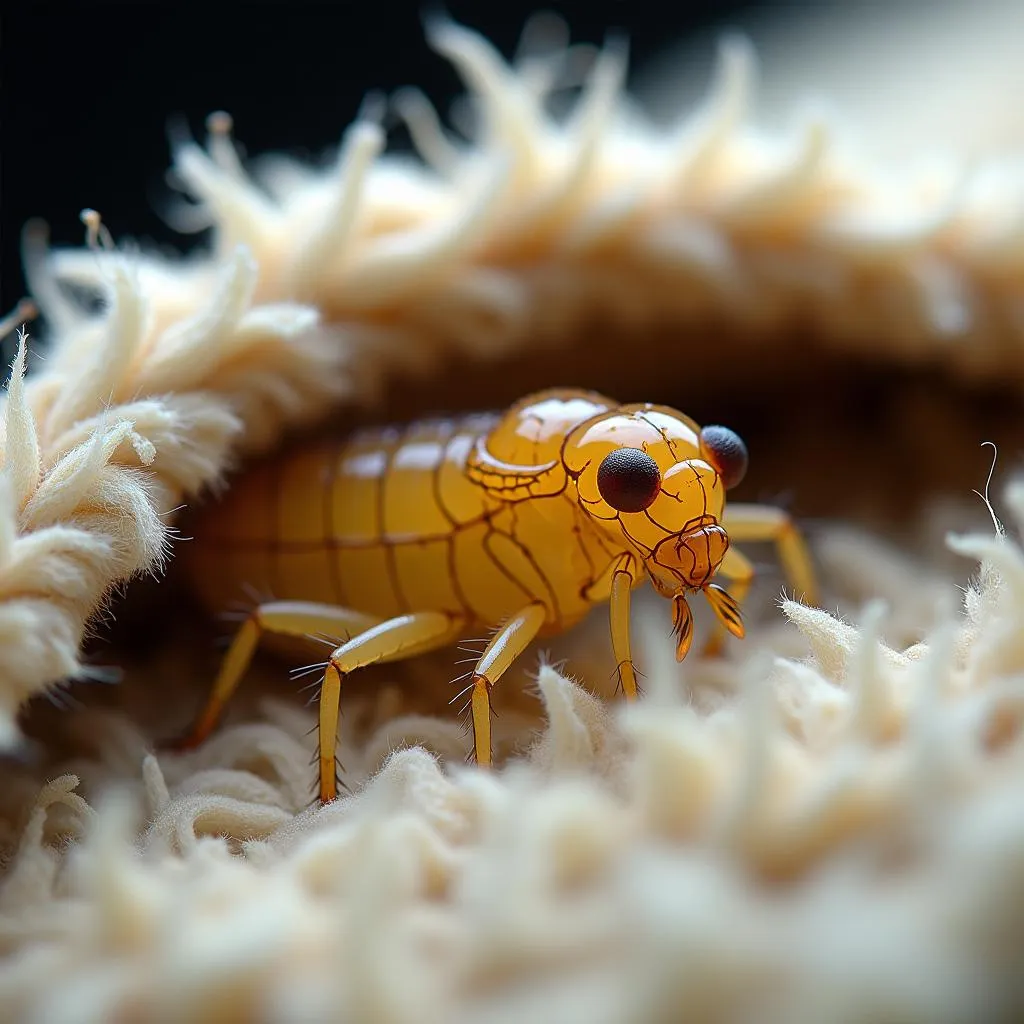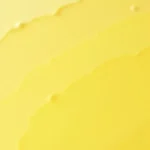Flea larvae, the immature stage of fleas, are often overlooked due to their small size and elusive nature. Knowing what color flea larvae are can be helpful in identifying and addressing an infestation in your home.
Appearance of Flea Larvae
While adult fleas are dark brown and easily visible to the naked eye, flea larvae are much harder to spot. Here’s what to look for:
- Color: Flea larvae are off-white or cream-colored, sometimes appearing translucent.
- Shape: They have slender, worm-like bodies that are segmented.
- Size: Flea larvae are tiny, measuring only about 1/4 inch in length when fully grown.
- Movement: They are legless and move with a wriggling motion.
 Close-up image of flea larvae
Close-up image of flea larvae
Where to Find Flea Larvae
Flea larvae thrive in dark, humid environments and are typically found:
- On pets: Although they don’t live on animals like adult fleas, larvae can be present in their fur, especially around the neck and tail area.
- In pet bedding: Bedding provides the warmth and darkness that larvae prefer.
- Carpet and rugs: The fibers offer protection and trap moisture.
- Cracks and crevices in floors: Larvae can squeeze into even the smallest spaces.
- Upholstery and furniture: They can hide in the fibers of furniture, especially if pets frequently rest there.
 Flea larvae hiding in carpet fibers
Flea larvae hiding in carpet fibers
Life Cycle of Fleas: From Larvae to Adults
Understanding the flea life cycle is essential for effective flea control:
- Eggs: Adult fleas lay tiny, white eggs on the host animal. These eggs often fall off into the environment.
- Larvae: Eggs hatch into larvae within a few days. The larvae feed on organic debris, including flea dirt (digested blood) excreted by adult fleas.
- Pupae: After feeding for one to two weeks, larvae spin cocoons and pupate.
- Adults: Adult fleas emerge from the cocoons and seek out a host animal for blood meals.
 Diagram illustrating the four stages of the flea life cycle
Diagram illustrating the four stages of the flea life cycle
Mistaking Flea Larvae for Other Pests
Flea larvae can be mistaken for other small, white insects, such as:
- Clothes moth larvae: These are also off-white and worm-like but have a distinct brown head capsule.
- Drain fly larvae: Found in drains and moist areas, these larvae are darker and have a pointed tail.
Conclusion
Identifying flea larvae early is crucial for preventing a full-blown infestation. If you suspect you have flea larvae in your home, contact a pest control professional for effective treatment options.

